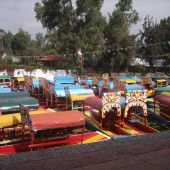
The educational experience described in this article was developed in the course “Social and Cultural Contexts of Teaching” for the Sociology of Education bachelor’s degree at the National Pedagogical University, Mexico. In this course, students are expected to develop favorable attitudes toward the environment. The student’s defined environmental problems made a diagnosis and elaborated a case study, to discuss concrete solutions in their community. The educational experience included several moments: framing, joint planning of individual and group activities, and development of the case study. The balance of the results of the course was favorable; the group learned to work cooperatively, mutual trust prevailed within the teams, group agreements were respected, the group goal was clearly defined, and a case study was delineated and developed.
Continue Reading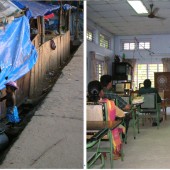
Among all the pressing needs for educational innovations that we face today, arguably the most imperative is the need to elicit learners’ active collaboration towards a ‘Great Transition’ into a secure and sustainable future for humanity. Among the numerous challenges that this endeavour entails, the anticipated arrival of unprecedented numbers of climate refugees will severely challenge the capacities of host institutions to maintain human security – connecting to a second pressing need, namely to promote and maintain cultural safety for newcomers and hosts. We focus on the question how compatible those two educational projects might be. To what extent could a Transition curriculum include and inform a curriculum for cultural safety, and how could a curriculum devoted to the principles of decolonisation internalise the need for living within our means? Neither one can be successful without the other. In general the two educational projects are reconcilable and inform and reinforce each other. However, some specific objectives of the Transition curriculum, mainly in the affective domain, require careful attention to cultural differences and reasoned compromise.
Continue Reading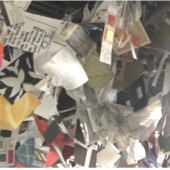
Many educators teach the topic of sustainability, but how many do so in a sustainable manner? From the requirement of textbooks, to paper for printed syllabi or assignments, higher education is a consumer of resources. The materials of design education, however, expand to include media like trace paper for ideation or foamcore for model making, as a means of communicating ideas. Yet, following presentations and grades, a majority of these physical materials enter the waste stream while digital versions populate online portfolios. Hence, design education provides a unique and transferable lens to explore an inquiry-based collection, documentation, exhibition and repurposing of discarded materials, to render new insights and re- imagine pedagogical practices, wherein learning and deliverables truly reflect the values and discourse of sustainability.
Continue Reading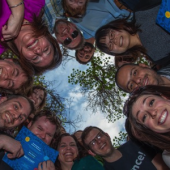
Abstract: In order to effectively address global sustainability challenges, a wide spectrum of society must be engaged. Universities generate knowledge, enhance understanding of sustainability problems and identify potential pathways to solutions. However, the information they produce often does not reach the public sector. Primary and secondary schools contain expert teachers and science communicators, but they are often limited by educational standards and other teaching duties. On the other hand, museums, such as science and natural history museums, are particularly skilled at translating scientific information so that it engages and excites the general public without the limiting expectations of school systems. Thus, partnerships between museums and universities offer great potential for disseminating sustainability knowledge and solutions on a global scale. However, given the complexity of sustainability problems, partnerships between universities and museums require a deep level of collaboration beyond the scope of information or resource exchange. In this article, we explore our experiences collaborating with museums, reflecting on challenges and, ultimately, identifying four main focal areas to successful, transformational collaborations. Though we focus on museum partnerships from the university perspective, we contend that any institution can apply these four steps to make progress on wicked problems that require immediate action.
Continue ReadingThis paper examines the conceptualization and implementation of teaching inequality through placed-based and experiential learning while focusing on issues that impact the sustainability of communities through the effects of the social and historical constructs of race, class, and gender. The goal is to push students to rethink issues of sustainability in a more holistic way including social, economic, and political aspects to sustainability. In turn, students are empowered through a Freirian pedagogy to become “student-teachers” for the society in which they live in partnership with a local community organization to create public interactive history exhibits that create educational opportunities to both identify and document historical and current inequalities and their effects on the present moment and to encourage the community to engage with and analyze their own history in a manner to create meaningful dialogue and public discussion for the creation of a more equitable and sustainable society.
Continue Reading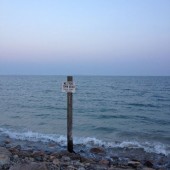
Effective sustainability education is constrained, in part, by an inability to consistently define what it is, who it is for, and how it can best address present-day concerns. Often reduced to a set of behaviors with a future orientation for intergenerational security, sustainability loses the immediacy and importance of issues like hunger, homelessness, and the impact of toxic industry practices on real people in real communities, despite the fact that these all represent foundational aspects of sustainability. Critical sustainability harnesses place and community to make connections between equity, ecology and economy explicit. Requiring a deep connection with the socio-ecological landscapes of our experiences, critical sustainability utilizes individual and community identities in working towards resilience. In this paper, we explore the ways that participatory action research (PAR) can leverage place and community to disrupt systems of power and privilege and demonstrate this approach as both effective pedagogy and a powerful orientation toward addressing community-level climate change adaptation. We contend that critical sustainability education requires sincere engagement with place, along with the shared, community-driven knowledge production that is the cornerstone of PAR.
Continue Reading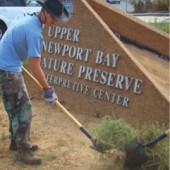
Abstract: If we are to educate the coming generation about the threats to the environment and the consequences of the excesses of human actions on our planet, educators need to consider critical pedagogy as a means of engaging students in thought and action. This article examines texts from prominent sustainability advocates and researchers, analyzing how they frame sustainability on a spectrum of hope that will then enable educators to address sustainability education with a realistic sense of agency while preparing students to meet the challenges for a sustainable future. Suggestions for pedagogical applications are included for each category across the spectra of hope.
Continue Reading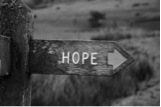
Abstract: The concept of hope is rich in context, and working with it from different angles can enhance inner resources. Framing hope as a process offers tools for sustainability educators: subjective exploration, empathy development, critical thinking, and civic engagement.
Continue Reading
Drawing from a theoretical framework of Ecopsychology and Biophilia this phenomenological study explored the following research question; What is the meaning of the human-environment relationship for children? This qualitative investigation utilizes data from writing samples and follow up focus group interviews with 68 children providing a robust sample of 6-12 year olds perspectives. Qualitative data analysis software using QSR Nvivo ® 7 & 8 was used to systematically provide topic, analytic, matrix and categorical coding for the 265 pages of textual data. Results indicate that children have a love of nature; a positive deep-seated intellectual and emotional appreciation for nature based on “experiences through” and “affection for” nature. When children expressed their relationship with nature they often did so from a place of positive emotional friendship or unconditional love. This study provides a visual representative diagram based on quantifiable qualitative data illustrating the bonds between children and nature. The biophilic results show that children are “falling in love” with nature and this representation can provide a glimpse into the possibility of “standing in love” with nature as people grow into adulthood.
Continue Reading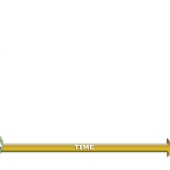
This article looks at the Wisdom Development Process and the importance of the heart in ensuring sustainability. This will be a key process for developing leaders in the emerging Wisdom Economy.
Continue ReadingRenewable energy has become an important priority to the development of human society. The authors proposed an innovative “Proposing-Learning” model to improve the renewable energy education at the university level, in which the student community was extensively involved in the selection, development and assessment of a capstone project. In this project, a hybrid energy harvesting system prototype comprised of a bamboo wind turbine and solar panels was developed at the University of Vermont. The project idea was initially proposed through an online collective intelligence voting system, and then discussed in a committee comprised of students, faculty, staff and alumni members. A group of undergraduate students, representing different engineering disciplines, worked with the faculty advisors to create the prototype successfully. Good assessment was received from the students and local community for the project. Finally, the authors discussed the future effort to improve this education model and the potential applications of the hybrid renewable energy system.
Continue ReadingEat local. Choose a reusable bag instead of plastic. Put a brick in the toilet. These are intuitively simplistic environmental “solutions” that may do little but make a person feel environmentally virtuous. Energy and environmental science teaching requires us to change students’ preconceived simplistic notions about solving environmental issues if we want these future leaders to make real environmentally effective decisions. Students need to understand that the energy input in a disposable plastic bag is dwarfed by the energy expenditure of driving to the grocery store with a reusable bag, so that they don’t make symbolic, but ineffective decisions. One approach is to have students attempt to develop a “sustainable” product. The complexity of environmental solutions becomes evident when we have to evaluate the energy use and environmental consequences from raw material sourcing to reuse.
Continue ReadingThe “Whole Earth Catalog” (1968-1972) featured a collection of creative ideas, articles, and durable, practical tools promoted from a utilitarian, environmentally conscious, and intellectual perspective. The wisdom inherent in the catalog may be of value to education today, as we seek innovative, timeless, and empowering technologies to promote sustained learning for all. This purpose of this article is to position the discussion of sustainable educational technology tools for 21st Century education within the context of the “Whole Earth” standards: 1) High quality at a reasonable cost, 2) Easily accessible, 3) Useful and relevant to independent or self education, and 4) Capable of launching a cascade of new opportunities.
Continue Reading
When the Department of Geography at the University of Oklahoma expanded its undergraduate degree options to include Environmental Sustainability in 2011, it was faced with the question of how should the Life-Cycle Assessment (LCA) core course be taught, and what aspects of LCA should it cover. In addition to the textbook selected for the classroom, it was clear that students would also need to get hands-on experience using LCA in a manner that reinforced and extended the themes taught in class. This dual challenge was resolved with the selection of a readable and easily understood text and the adoption of Sustainable Minds software for the conduct of student projects. In this paper, we describe the manner in which LCA is taught in the classroom and the important role that LCA software has played to help students acquire a working understanding of the merits of the technique as well as its limitations. Examples of student projects that were completed as course assignments are used to illustrate the scope of student interests and accomplishments.
Continue Reading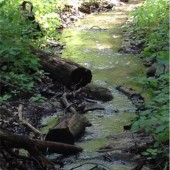
This study explores the overall health of the ecosystem at Glen Stewart Ravine in Toronto by the caring high school teenagers. Care for their ecological habitat reminds one of an ancient First Nation’s proverb: ‘We do not inherit the Earth from our ancestors but borrow it from our children’. These high school girls were exploring their neighbourhood environment to exhibit social care and joy for the love of student- motivated Scientific Investigative Project -SIP (Ayyavoo, 2013).
Teenage school girls from the inner city care about their immediate environment and acknowledge the interconnectedness of flora and fauna (including plants, animal and humans). The ‘hands-on and minds-on’ challenge inspires students to observe and study their natural habitat in depth to show care to sustain their neighbourhood ecosystem. The adage, ‘we borrow it from our children’, inspires these high school girls to use their scientific strategies to collect a series of biological and chemical test data from their environment. The biological test involved sifting a large net through the running ravine water to classifying the collected macroinvertebrates, while the chemical tests involved measuring the pH level of the ravine in addition to its turbidity levels, oxygen levels, and temperature. The data analysis depicts the health of the ravine, for the moment, at a passable grade. However, in order to maintain this positive state, Glen Stewart Ravine needs to be frequently monitored as new shops and businesses sprout in the nearby surrounding area. The findings of this study may be useful in providing more public awareness on environmental sustainability, care and a community oneness to preserve the ecosystem for the future generation.
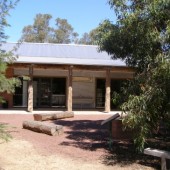
Place-based education is education that is “grounded in the resources, issues, and values of the local community and focuses on using the local community as an integrating context for learning at all levels” (Powers, 2004, p. 17). The purpose for becoming conscious of places in education is to extend “notions of pedagogy and accountability outward, toward places” making learning more relevant to “the lived experiences of students and teachers… so that places matter to educators, students and citizens in tangible ways” (Gruenewald, 2003, p. 620). Although place-based education is interchangeable with a number of terms – community based learning, rural education, project-based learning, service learning, and sustainability education – it encompasses a broad hope by educators to connect student learning to their community and the community to participate in the school (Powers, 2004). Situated within this partnership between school and community fostered through place-based education is the opportunity for rural-regional sustainability. In particular, the case study showcases how a school and community in rural south-east Australia have regenerated a degraded community stock-reserve to ‘tear down’ the school walls (fences) and perform place through the (co)creation of the Flatlands Nature Reserve as a place of protection, regeneration and environmentally sustainable practices. Furthermore, the story of the Flatlands Nature Reserve shows that “place is not only local, specific and static” but can be seen as a ‘revitalizing of the commons’ (Bowers, 2005) which has co-created a place of bio-diversity, regeneration and sustainability education that has fostered rural-regional sustainability.
Continue Reading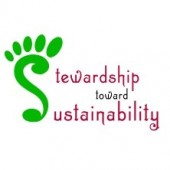
There are unique challenges in sustainability education that many in administrative and decision-making positions may not fully understand. While there is a general movement toward interdisciplinary curriculum design in colleges and universities, what may truly be needed to effectively address sustainability issues is trans-disciplinary curriculum design. Using my experience in creating the Stewardship Toward Sustainability certificate program at Ferrum College as a launch point, I discuss solutions to overcoming conceptual and political barriers in this process.
Continue Reading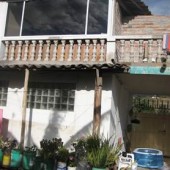
Rick Medrick cogently makes the argument that sustainability education IS experiential education!
Continue Reading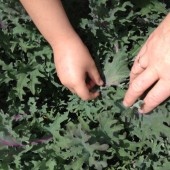
In order to address the ecological and social problems of sustainability in our modern times, citizens need to be empowered with an understanding of science, technology, engineering, and math (STEM) concepts and practices. Furthermore, STEM must be democratized and taught in life-giving and life-sustaining ways that include all students instead of the small fraction of “high achievers” and limited to the “potential” scientists, engineers, and mathematicians. At present, K-12 students and their teachers rarely have the opportunity to learn beyond their concrete school walls and to reconnect with nature, exacerbating their disconnection of STEM from real life and hence sustainability. We believe that engagement with school grounds and gardens and the very soils on which learning takes place can provide simple yet authentic day-to-day educational experiences that can bring mindfulness of lessons related to the cycles of life and death and to the interplay of justice and power in our communities. To transform teaching and learning in the classroom, teachers need different learning experiences that provide them with the time, space, and appropriate supports to translate their learning into teaching practice making education relevant to life. School gardens provide a rich context for learning both for teachers and students by embracing experiential, integrated, and collaborative learning. This study highlights an example of a summer program that involved teachers in hands-on education related to STEM in the learning gardens at four low-income schools in southeast Portland representing the growing ethnic, linguistic, and cultural diversity of the districts in the metropolitan area. Teacher voices capture the essence of learning STEM in the learning gardens, and also address issues of social and environmental justice.
Continue Reading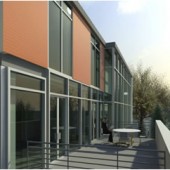
In a world of changing climate and environmental degradation, architects play a key role in the pursuit of sustainability. In this article, Karen Kensek offers digital tools that will provide up and coming architects with the necessary skills and knowledge to produce sustainable building designs.
Continue ReadingAs institutions of higher education continue to embrace sustainability as a guiding principle, administrators, campus sustainability leaders, and researchers in the field struggle to present a holistic picture of the changes necessary for complete organizational change. While resources available for decision-makers typically focus on individual case studies on specific concepts, few have worked to address the field as a whole. This paper aims to address sustainability within the frames conceived by Bolman and Deal in their seminal work Reframing Organizations (2008). Specifically, it looks at reframing organizational change within the structural, human resource, political, and symbolic frames, as well as adapting Kotter’s Change Stages to address how sustainability can, and should, transform colleges and universities, while providing the tools necessary for sustainability professionals to enact this innovation.
Continue Reading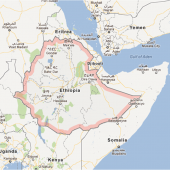
Partnerships between universities have the tantalizing possibility of providing fresh pathways to more sustainable societies. Institutions in sub-Saharan Africa are new players in this emerging development paradigm, but arguably are most in need of building capacity to address fragile and dynamic environmental and social conditions after decades of underinvestment in higher education. This paper documents the early stages of an Ethiopia-United States partnership to build capacity in institutions of higher education in Ethiopia in the critical area of sustainable water resource management that was funded by the United States Agency for International Development (USAID) and Higher Education for Development (HED). We explain how the concept of sustainability was interwoven with theories about learning organizations, supplemented by in-depth dialogue with stakeholders to assess existing capacity and future needs, and used to inform a strategic plan. The literature highlighted the need for a learning organization: a place where people continuously expand their ability to generate the results they truly desire, where innovative and expansive patterns of thinking are nurtured, where collective aspiration is set free, and where people are continually learning how to learn together. In 2011, the partnership established the Ethiopian Institute for Water Resources (EIWR) with the vision that it will become a key innovator in sustainable water resources management in Ethiopia by integrating education, research, outreach and training. One important observation so far is that in order to create a more substantive engagement than was realized in the “technology transfer” policies that shaped past North-South relationships, partnerships need to be authentic and characterized by open dialogue, mutual respect, and shared learning. Another is that the opportunities for fieldwork in Ethiopia’s complex social and physical landscapes also have enormous potential to create deep and learning experiences for other students of sustainability, thereby building capacity not just in Ethiopia but across multiple geographies.
Continue Reading
Chet Bowers case study course pushes the envelope of curriculum reform by challenging our “taken-for-granted” thinking. His students are first encouraged to confront the innate assumptions in traditional curricula and then asked to seek ways in which a true cultural commons can be brought into a fundamentally reformed curriculum that profoundly addresses sustainability issues.
Continue Reading